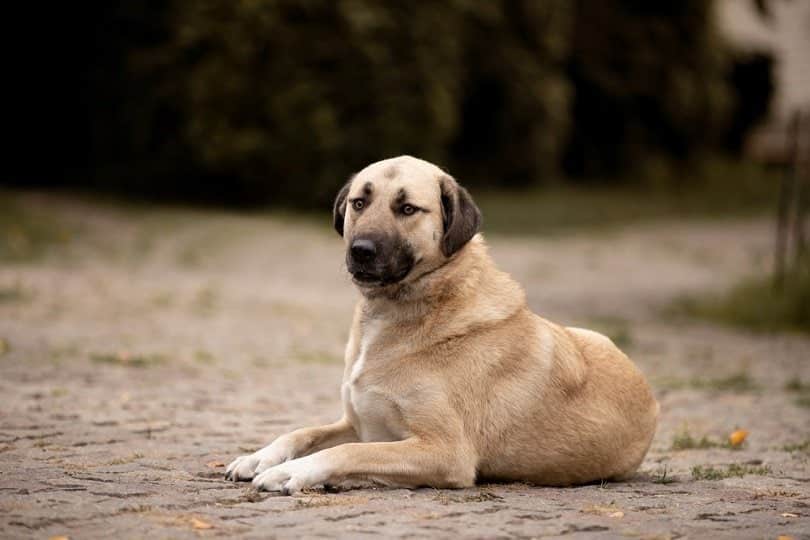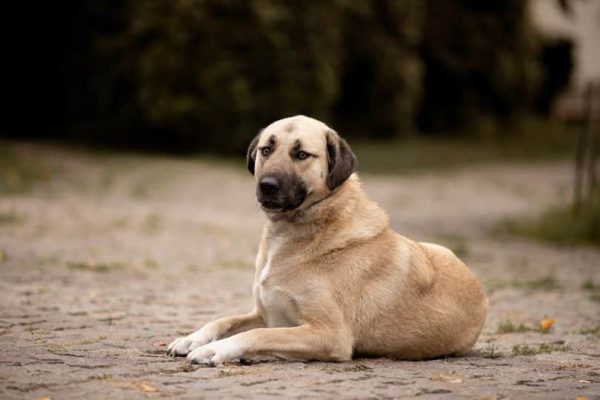Click Below to Skip Ahead
The Kangal is a dog with a strong and powerful presence. Bred to guard livestock from predators, these dogs are loyal to their humans and protect livestock with incredible confidence. These giant dogs are not suitable for everyone, and if you’ve considered this breed, you should familiarize yourself with their characteristics and traits before committing. Read on to learn the facts about the Kangal dog breed so you can determine if the breed is right for you.
Breed Overview
Height:
29 – 33 inches
Weight:
90 – 145 pounds
Lifespan:
11 – 13 years
Colors:
Tan, cream, sable
Suitable for:
Families with livestock, families with older children, experienced owners
Temperament:
Protective, loyal, alert, intelligent, calm, courageous
The Kangal Dog, also known as the Kangal Shepherd or Sivas Kangal, is a loyal and fierce protector, especially of sheep and goat livestock. Despite their protective nature and giant size, they are calm dogs with strong and powerful qualities.
The Kangal is an ancient breed, and it’s believed they share ancestry with the Mastiff. Their appearance is similar to the Mastiff but without the wrinkled faces, barrel chests, and short snouts of the Mastiffs we know today. They are patient and intelligent dogs but require an experienced owner for one to become well-behaved and properly socialized.
Kangal Origin & History
The Kangal hails from the Sivas province of central Turkey and has been around for centuries, even perhaps as long as the 11th century. This ancient breed was not bred for herding but to protect flocks of goats and sheep from wolves, bears, and jackals in their native land. They use intimidation as their weapon while guarding livestock by placing themselves between livestock and the threat, accompanied by warning barks, but they will attack only if necessary. In Turkey, they are held in high regard as a cultural icon and national treasure to this day.
They are more well-known in their native Turkey than in the States and were not introduced here until 1985. The American Kennel Club (AKC) does not recognize the breed; however, the United Kennel Club (UKC) does and recognized them in 1998.
Kangal Characteristics
Kangal Puppies
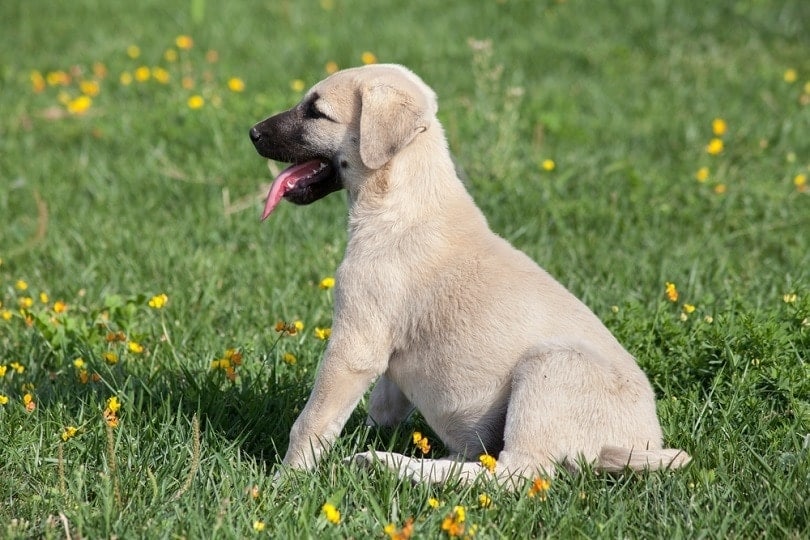
Kangal puppies are large in size and display a goofy persona. Kangal puppies love to chew and can be stubborn, along with having tons of energy. At around 2–2.5 years of age, the Kangal will become more watchful, serious, and protective. The Kangal grows into a more reserved role due to their nomadic lifestyle in Turkey, making socialization a crucial aspect of Kangal ownership.
To obtain a purebred Kangal, you must go through a breeder who adheres to the breed standard laid out by the UKC. You can find breeders scattered throughout the United States and internationally. You can also find Kangal rescue groups, depending on where you live.
If you’re looking for a Kangal pup to be a guardian of livestock, it’s beneficial to find a reputable breeder who begins acclimating their pups to sheep or goat livestock; however, this is not a necessity, as a Kangal puppy will often instinctively know how to protect livestock.
Temperament & Intelligence of the Kangal
The Kangal is alert, protective, and territorial of the humans they bond with and the livestock they protect. They also have a gentle character but will defend and protect livestock regardless of danger. They are intelligent and independent dogs who make excellent companions for experienced dog owners who understand how to establish hierarchy. These dogs can possess a stubborn streak due to their independent side but are intelligent enough to be trained by an experienced, patient, and dedicated dog owner.
Even though these dogs protect livestock against predators, they are not aggressive toward humans and should not be trained as guard dogs. They were bred to possess a calm nature and not chase livestock, as they are not herders. The Kangal is a good judge of character and not aggressive toward humans, but they do require socialization to understand particular behaviors of humans, such as understanding that the mailman is not a threat. They will display aggression only when necessary and only to the point of maintaining peace.
Given their massive size, they should never be taught to be aggressive, as the results can be disastrous. Rather, an owner must display a gentle yet firm presence while training to retain a calm temperament in the dog as an adult.
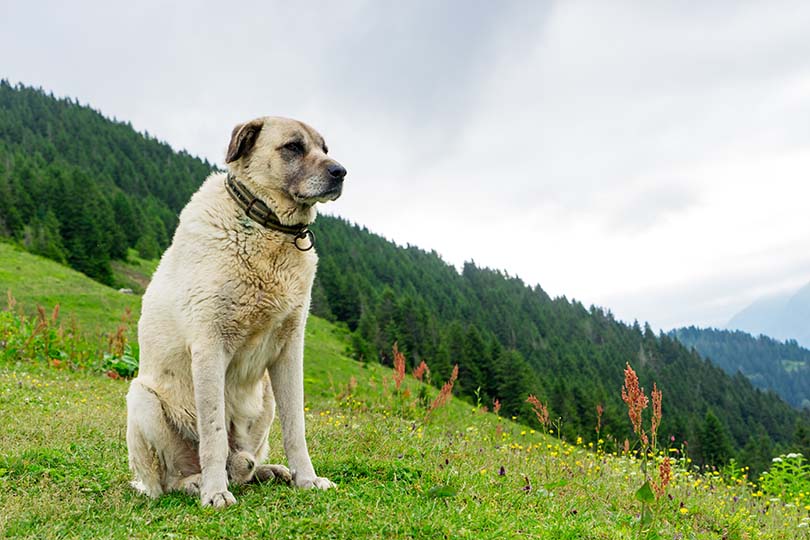
Are These Dogs Good for Families? 👪
The Kangal makes an excellent companion due to their gentle and calm nature. They are patient with children but do better with older children who understand how to respect this large breed. They require a large, secured, and fenced yard for exercise, and they need a job to do to prevent boredom and destructive behavior, such as digging (which they love).
If you have no livestock for the Kangal to protect, they’ll need to do activities with their humans to be happy, such as taking long, steady walks. Unlike most dogs, squeaky toys or balls do not usually interest this breed. They love guarding livestock, and if you have this dog strictly for companionship, be prepared to walk them every day. They may be a tad aloof with strangers but will relax once they realize the stranger is no threat.
Does This Breed Get Along With Other Pets?
Ideally, the Kangal does best as the only pet in the household. They are considered to have a low prey drive but may show aggression toward other small animals they do not know, such as the family cat or other dogs who invade their space unless socialized at a young age.

Things to Know When Owning a Kangal
Food & Diet Requirements 🦴
The Kangal requires food that is appropriate for their large size. The food should be complete and balanced and proportioned accordingly to prevent the Kangal from putting on excessive pounds.
We’ve seen some discrepancies regarding food requirements for this breed. Some sites recommend a low-protein, low-calorie diet because it is said that the Turkish people fed them barley mixed with water and a handful of protein. But for the westernized Kangal, we suggest getting feeding guidelines from the breeder or, more importantly, your veterinarian for precise food and diet requirements.
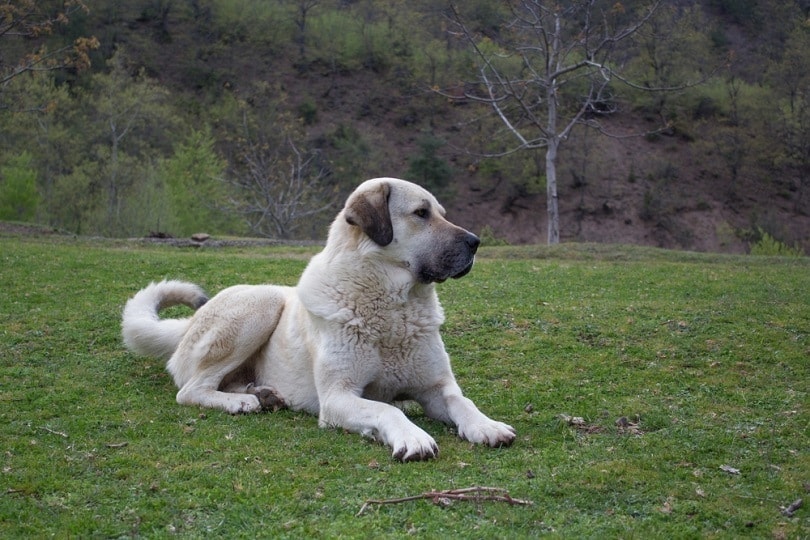
Exercise 🐕
The Kangal loves having a job as a livestock guardian, but if you own one strictly as a companion, they will need daily exercise to stay physically and mentally stimulated. Long, daily walks will suffice for this breed, with roughly 2 hours of exercise per day. You can also change up your walking routes for your Kangal to explore new surroundings. Due to the Kangal’s massive size and independent nature, taking them to a dog park is not advisable.
It’s crucial not to over-exercise a Kangal puppy because they grow more slowly compared to other breeds, and they have a longer period in which the bones are still growing.
Training 🎾
You can probably tell by now that the Kangal does best with an experienced dog owner who can show dominance in the hierarchy chain. The Kangal possesses a stubborn streak but is intelligent enough to learn basic commands. Proper training is essential in this breed to become well-behaved canines in the human world.
If you acquire a Kangal for guarding livestock, they will instinctively know what to do, but they do need positive reinforcement training to fit in with a human family unit. Given their stubborn streak and independent nature, one must possess patience and consistency in training the Kangal.
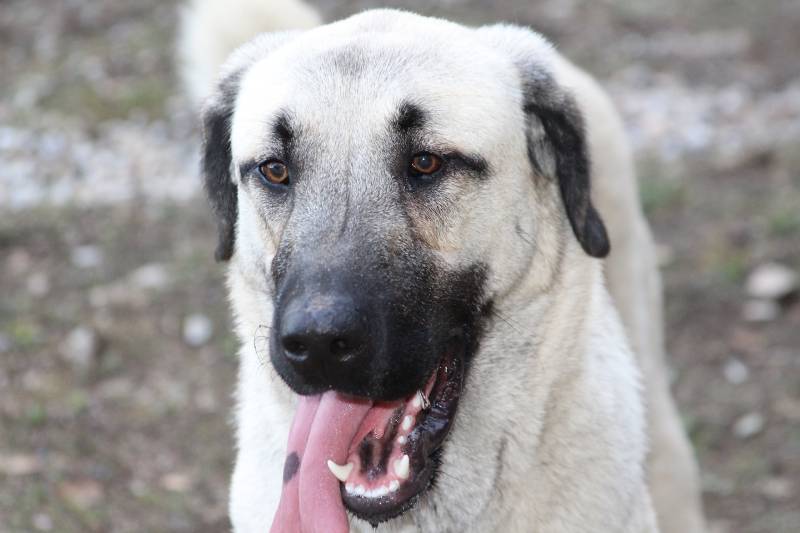
Grooming ✂️
The Kangal has a short, dense double coat that sheds minimally year-round and more heavily during the more prominent shedding months in the spring and fall. A weekly brush of the coat should suffice to keep the coat healthy, with every other day brushing in the fall and spring. They do not need baths unless they get dirty, and regular bathing is not recommended because it disrupts the natural oils that help keep the coat healthy.
Check the ears and nails often and clean/trim them as necessary. Implement a dental hygiene regime by brushing the teeth at least twice a week with dog-safe toothpaste.
Health and Conditions 🏥
The Kangal is an overall healthy breed with low chances of inheriting genetic conditions due to its rarity and selective breeding over hundreds of years. However, they are not exempt from developing certain health conditions:
- Entropion
- Ear infections
- Hip dysplasia
- Elbow dysplasia
Male vs. Female
An evident difference is the size, with males weighing slightly more than females. Males average 110 to 145 pounds, whereas females range from 90 to 130 pounds. However, females are just as equally protective of livestock and certainly possess the strength to do so. In a nutshell, there is not much difference between the two sexes other than a slight size variation, with the females carrying a more feminine appearance.

3 Little-Known Facts About the Kangal
1. Their Colors Are Always Solid
The Kangal will always have a base color of either tan, cream, or fawn; a Kangal with non-standard colors is not considered purebred. They have a black mask that covers the muzzle that extends over the top of the head, and the ears are also black.
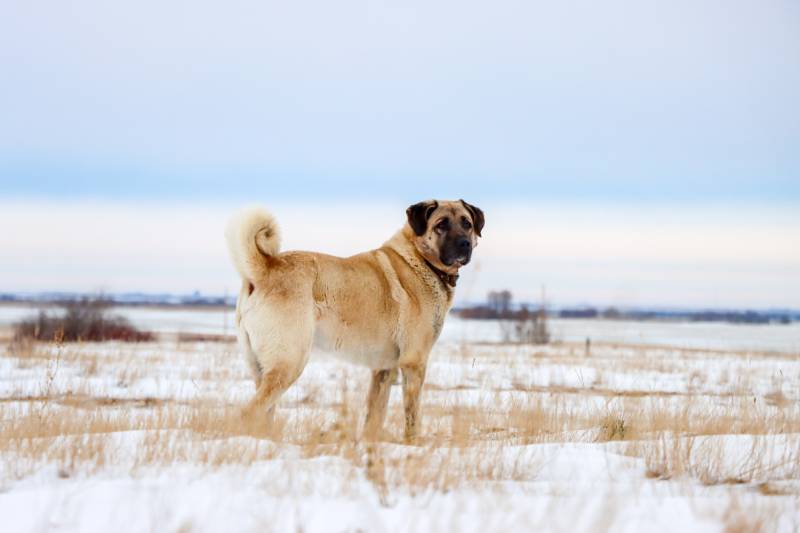
2. They Are Not to Be Confused With the Anatolian Shepherd Dog
There seems to be a common confusion between the Kangal and the Anatolian Shepherd. The Anatolian Shepherd is a separate breed recognized by the AKC, whereas the Kangal is not. The Kangal is calmer but harder to find in the States compared to the Anatolian Shepherd. The confusion comes from their similar appearance, but they are entirely two separate breeds.
3. The Double Coat Serves a Purpose
Kangals have dense double coats that protect them from both hot and cold climates. They have a soft and dense undercoat that keeps them well-insulated in the winter, and the undercoat sheds in warmer weather to keep them cool. The outer coat is also weather-resistant.
Final Thoughts
The Kangal breed is not your average family pet. They were bred to guard livestock more than being a family companion, but with the right experienced owner, they can become family companions with proper socialization and training. They are not as common in the States, but you can find breeders in various locations. If you find a breeder, ensure the Kangal is purebred, as their rarity can cause one to obtain a Kangal that is not. Remember, a surefire way to tell if the Kangal is purebred is by the solid coat color of tan, cream, or fawn.
Featured Image Credit: Marry Kolesnik, Shutterstock

